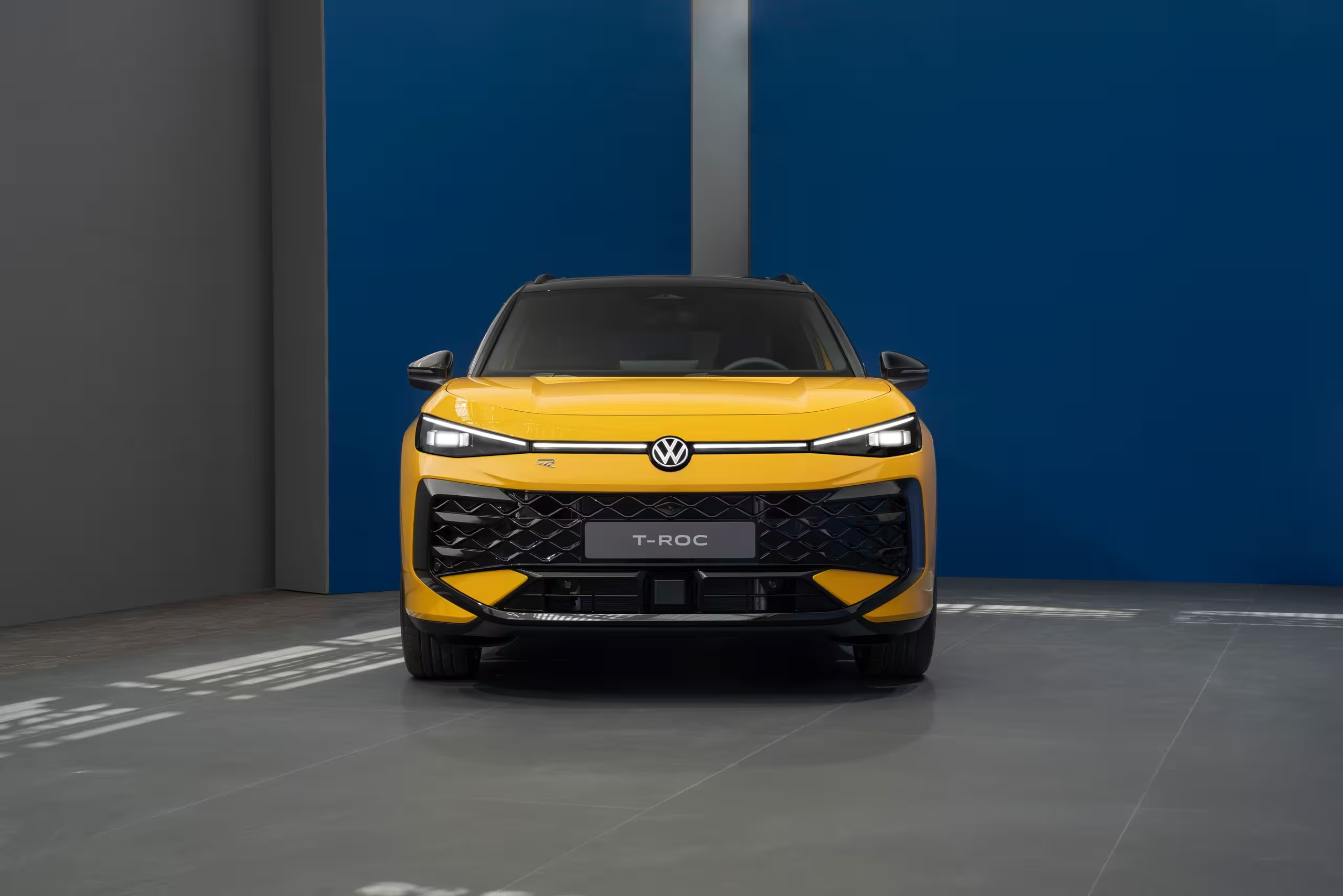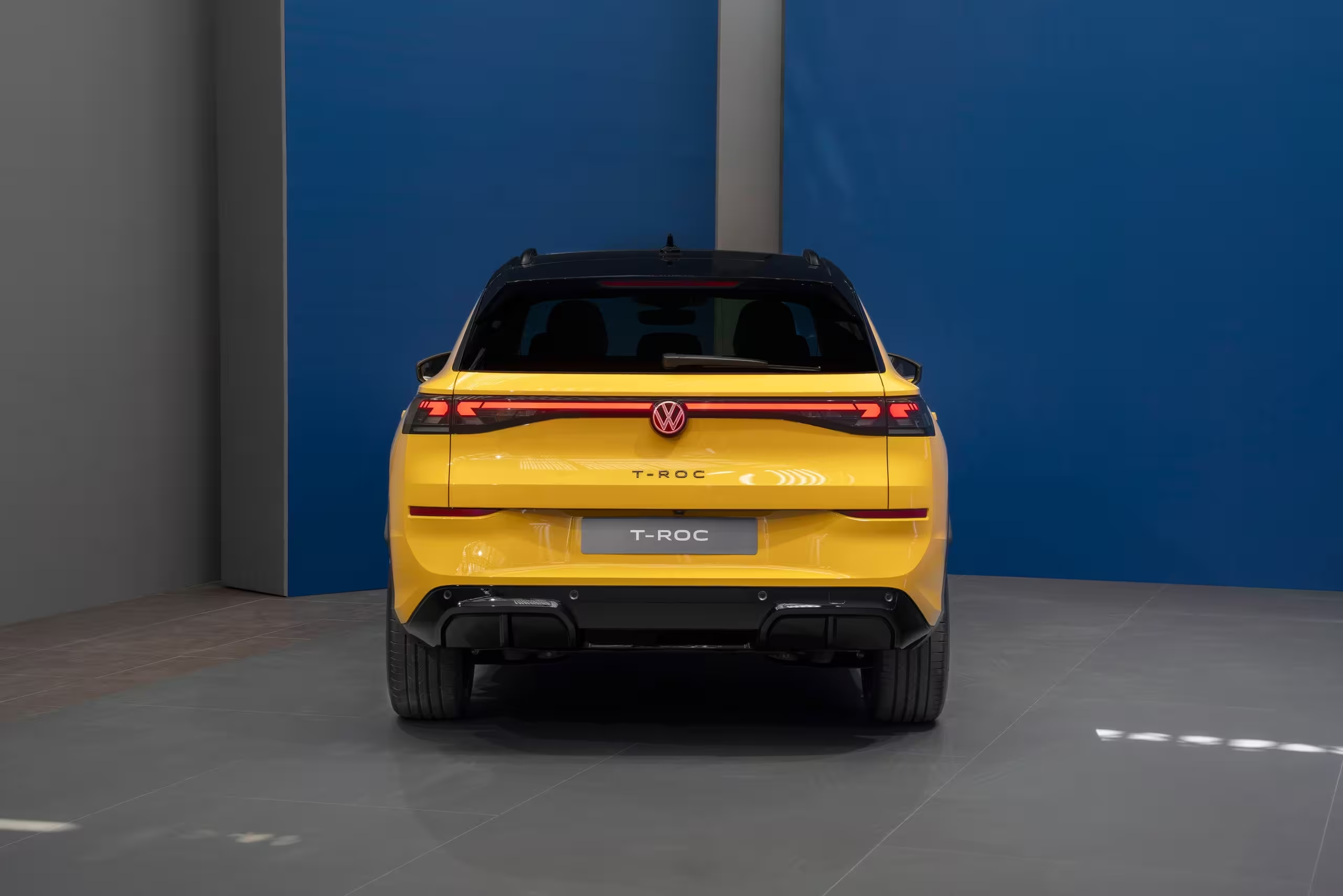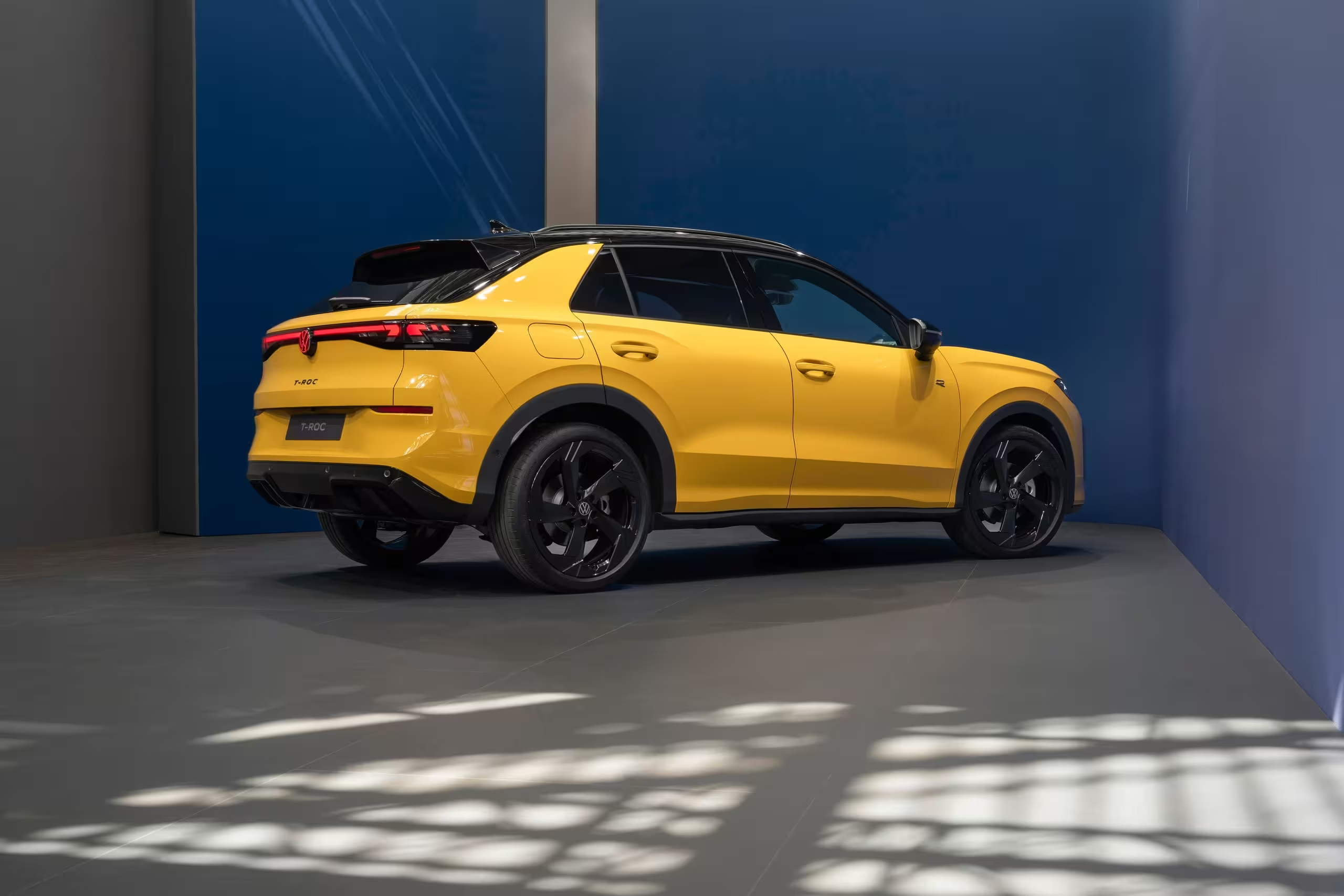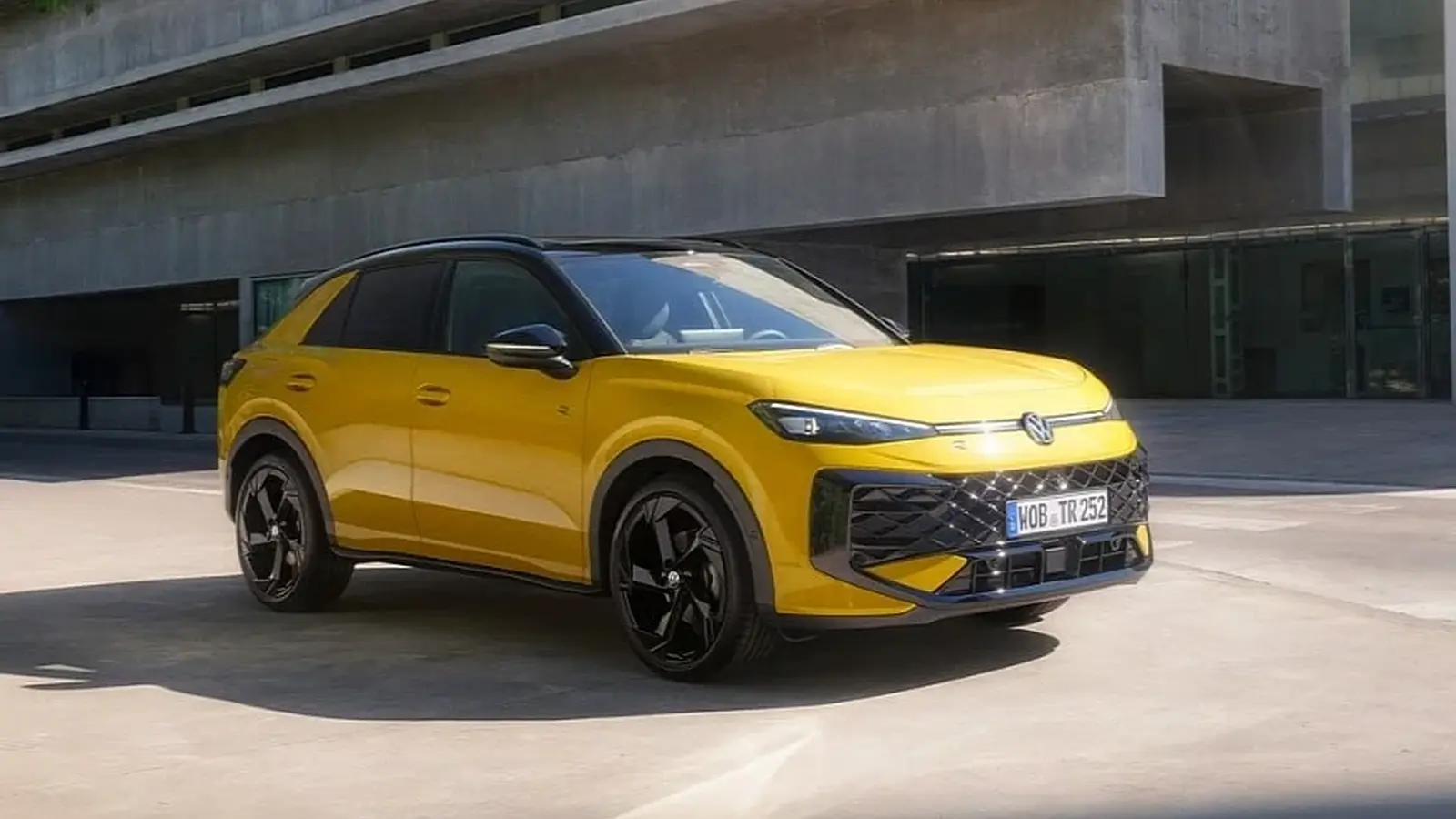6 Minutes
A Ground‑Up Redesign for VW’s Popular Compact SUV
Volkswagen has unveiled the 2026 T‑Roc, a thoroughly redesigned second‑generation of its bestselling subcompact crossover. Launched as a more mature, tech‑rich and roomier alternative to the outgoing model, the new T‑Roc is clearly aimed at expanding Volkswagen’s SUV success — and even closing the gap on the larger Tiguan.
Design: Evolutionary Styling with Modern Details
VW preserved the T‑Roc’s recognizable silhouette — including the coupe‑like rear profile — but updated virtually every exterior surface. Both ends of the car receive the biggest visual upgrades: the front is dominated by slimmer LED headlamps and the option of IQ.LIGHT LED matrix headlights integrated with a white illuminated Volkswagen badge, while the rear gains a continuous LED crossbar and a red illuminated VW logo for a distinctive night‑time signature.
Paint and Personalization
The 2026 T‑Roc offers six paint finishes, four of them new: Canary Yellow (solid), Flamed Red (metallic), Celestial Blue (metallic) and Grenadilla Black (metallic). Buyers can also choose between a single‑tone roof or a bi‑color roof to enhance the sporty, premium look.
Platform & Dimensions: MQB evo Underpinnings
Underneath, Volkswagen migrated the T‑Roc to the MQB evo modular transverse platform — the same advanced architecture that underpins the newest Tiguan and the Tayron. The switch delivers a marginal but meaningful size increase: the new model grows by roughly 12 cm (about 5 inches) compared with the previous generation, which translates to noticeably improved passenger space and cargo capacity for a compact SUV.

Interior: Tech, Comfort and Practicality
The cabin has been rethought with higher‑grade materials and modern ambient lighting. A prominent 13‑inch infotainment display dominates the centre stack, while a fresh fabric treatment spans the dashboard for a more premium feel. Ergonomics receive attention too: new ergoActive seats with 14‑way adjustment and a massage function are available to enhance long‑distance comfort.
Rear space benefits directly from the dimensional increase. Volkswagen says the T‑Roc can comfortably accommodate passengers up to 185 cm (about 6 feet) in both front and rear seats. Luggage capacity has risen by 30 litres, bringing the boot to 475 litres with the rear seatbacks upright — competitive numbers for the compact crossover segment.

Powertrains & Performance: Hybrid Focus for Europe
For Europe, Volkswagen is positioning the 2026 T‑Roc as a hybrid‑centric range. Initial line‑up includes 48‑volt mild‑hybrid 1.5 eTSI turbo‑charged gasoline engines offered in two power ratings: 114 hp and 148 hp. All powertrains will be paired with a 7‑speed dual‑clutch gearbox (DSG) as standard.
VW also confirms that two new full‑hybrid systems will join the range later, although technical details and power outputs are being held back for now. In addition, higher‑output 2.0‑litre TSI variants and several other mild‑hybrid configurations are planned to broaden performance choices.
Drivetrain Options
At launch, T‑Roc models will be front‑wheel drive only, with the brand’s 4MOTION all‑wheel drive system becoming available at a later date. That staged approach lets Volkswagen cater initially to urban and economy‑minded buyers while retaining the option to add traction‑focused versions for buyers who need AWD capability.

Specifications Snapshot
- Platform: MQB evo modular transverse architecture
- Seating: 5 passengers
- Boot space: 475 litres (rear seats upright)
- Engines at launch (Europe): 1.5 eTSI 48V mild‑hybrids — 114 hp and 148 hp
- Transmission: 7‑speed DSG (dual‑clutch)
- Drivetrain: Front‑wheel drive (4MOTION AWD option later)
- Infotainment: 13‑inch central touchscreen
- Seats: ergoActive with 14‑way adjustment and optional massage
Market Positioning & Pricing
The T‑Roc has been Volkswagen’s hottest subcompact crossover since its 2017 debut and remains the brand’s second best‑selling SUV after the Tiguan. Over its lifecycle the first generation and mid‑cycle facelift have amassed more than two million sales — and VW expects the new, more premium second generation to boost the model’s appeal even further.
Pre‑orders for Germany are already open, with customer deliveries scheduled to begin in November. Pricing in Germany starts at €30,845 for the entry‑level 1.5 eTSI variant (approximately $35,700 at current exchange rates), positioning the T‑Roc squarely in the competitive compact SUV market where value, technology and efficiency matter most.
How the T‑Roc Compares to the Tiguan and Rivals
While the Tiguan remains Volkswagen’s larger, more family‑oriented SUV, the second‑gen T‑Roc narrows the gap with increased interior space, upgraded tech and stronger hybrid focus. The T‑Roc’s smaller footprint keeps it agile and city‑friendly, while the MQB evo platform and available higher‑output drivetrains mean it can now better challenge premium rivals in comfort and capability.

Against direct competitors — such as the Nissan Qashqai, Ford Kuga/Escape and Renault Arkana — the new T‑Roc’s combination of German engineering, hybrid options, 13‑inch infotainment and refined cabin materials should make it a persuasive proposition for buyers seeking a compact crossover with premium touches.
Conclusion: A Strategic, Tech‑Forward Mid‑Cycle Leap
The 2026 Volkswagen T‑Roc represents a strategic evolution rather than a radical reinvention: familiar from a distance but transformed where it counts. With MQB evo architecture, hybrid‑first powertrain choices, more interior room, advanced lighting signatures and upgraded tech, VW’s new T‑Roc aims to broaden its appeal across urban drivers and small families — and, ultimately, to press the Tiguan for top SUV billing within the brand’s lineup.
Source: autoevolution


Leave a Comment